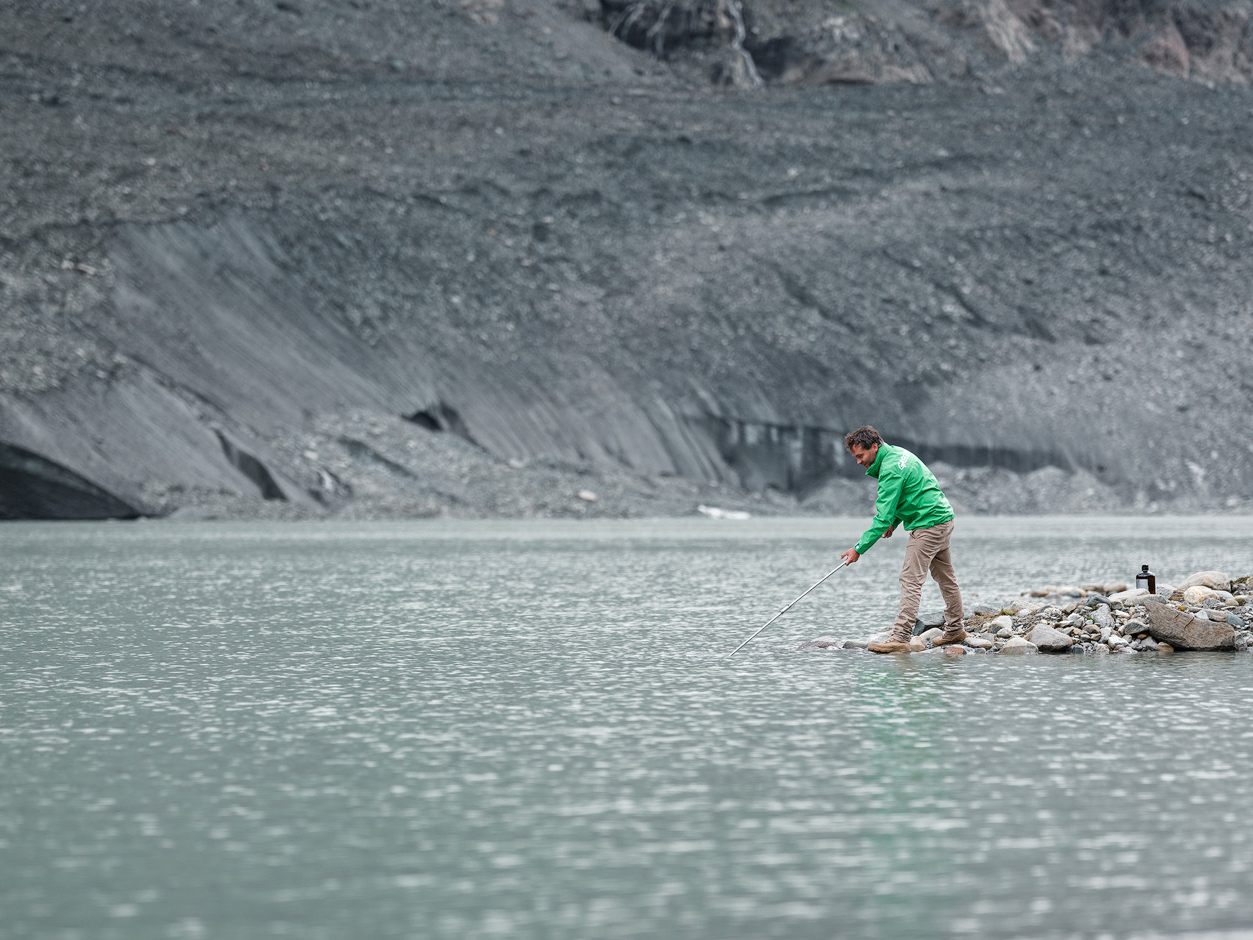Microplastics Detected for the First Time in Local Glacier Lakes

The analysis commissioned by Greenpeace involved collecting samples last summer from glacier lakes at the Pasterze, the East Tyrolean Schlatenkees, the Schmiedingersee at Kitzsteinhorn, and the Hallstätter Glacier, which were then evaluated at the University of Exeter in England. The alarming result: microplastics were found in all samples.
Microplastics in Local Glacier Lakes: A Threat to Humans and Nature
A total of 13 different types of plastic were detected, "partly from textiles, packaging, or industrial applications," according to the environmental organization. These originated from direct human activities on the glaciers, such as skiing or hiking, or were results of activities in nearby residential areas, such as rubber abrasion from car tires, which can be stirred up and transported by wind and rain over dozens of kilometers. Microplastics can also be transported over long distances through the atmosphere and reach even extremely remote regions via rain and snowfall. Microplastics in glacier water "pose not only dangers to the immediate environment, aquatic life, and local biodiversity but can also contaminate drinking water sources in Austria," the NGO stated in a release on Tuesday.
After Finding Microplastics: Greenpeace Calls for Stronger Glacier Protection
Especially in the International Year of Glacier Preservation, it is not only important to combat glacier melt caused by climate warming but also to keep glaciers clean as important water reservoirs, emphasized Greenpeace, calling for intensified glacier protection: In future environmental impact assessments, "moraines and glacier forefields must also be protected, not just the glacier ice." Furthermore, a halt to construction activities on glaciers is demanded: "New excavation and blasting work on glaciers should be banned, as they destroy sensitive ecosystems and release more microplastics."
The highest concentration of artificial fibers and particles was detected in a sample from the lake at the glacier tongue at Schlatenkees in the Venediger Group, far from marked paths, where polyester, acrylates, polyamide, chlorinated polyethylene, and chlorosulfonated polyethylene were found. The Kleine Eissee at the Hallstätter Glacier also proved to be heavily contaminated. Synthetic blue fibers, presumably from jeans, were found in all samples. Microplastic particles are likely to originate from polyester clothing, PET bottles, or shoe soles. Samples were also taken at the Stubai Glacier. However, the corresponding sample bottles broke during shipping to the Greenpeace Science Unit laboratory at the University of Exeter.
Negotiations on the UN Plastic Agreement Continue
In this context, Greenpeace Austria is calling on the future Austrian government to adhere to climate goals and reminds that international negotiations for a UN plastic agreement are ongoing: "Greenpeace demands that by 2040, 75 percent less plastic is produced." After the fifth and originally intended final round of negotiations in December, where representatives from over 170 countries met for a week in Busan, South Korea, ended without agreement, negotiations are expected to resume at the end of May. While a coalition of over 100 countries, including the European Union, advocates for a cap on plastic production, oil states like Saudi Arabia and Russia want the agreement to focus solely on efficient waste management. According to the UN, around 400 million tons of plastic waste are produced globally each year, with the trend increasing.
(APA/Red)
This article has been automatically translated, read the original article here.





